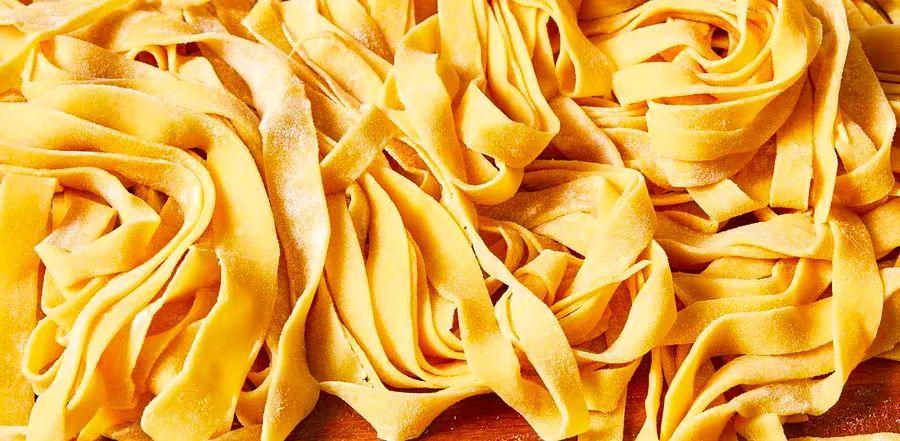How to Prepare Fresh Pasta

Store-bought dried pasta is typically made from hard semolina flour and water, which is pressed into thin shapes and then dried until firm. In contrast, fresh pasta is usually made from soft '00' flour and eggs, and it's cooked while still soft. Some fresh pasta is also made with semolina and water, but it doesn't go through the same extensive drying process as the boxed varieties. Because of these ingredient and texture differences, fresh and dried pasta require slightly different cooking techniques. The good news is, preparing perfectly cooked fresh pasta is easier than you might think.
How Soon After Making Fresh Pasta Should You Cook It?
You can cook fresh pasta immediately after shaping the noodles, but many chefs and home cooks recommend allowing it to dry for a short time first to improve texture and help it retain its shape. In professional kitchens, drying is done with specialized equipment, but at home, simply laying short pasta on cooling racks or hanging long pasta over dryers for a few hours should work well. If you're in a rush or don't mind the pasta losing some of its shape, feel free to cook it right away.
If you buy fresh pasta from a store, it's best to cook it the same day you purchase it. Fresh pasta contains eggs, and since you don’t know exactly when it was made or how long it’s been stored, cooking it promptly ensures it stays safe and retains its best quality.
Does Fresh Pasta Cook More Quickly?
If you're accustomed to waiting 10 minutes or more for dried pasta to cook, fresh pasta will definitely surprise you. Depending on its shape, size, and whether it’s stuffed, fresh pasta typically cooks in just 2 to 5 minutes. Dried pasta is firm and has had most of its moisture removed, while fresh pasta retains more water, meaning it needs less time in the boiling water to cook through and rehydrate.
How to Cook Fresh Pasta

Salt Liberally
You’ve probably heard that pasta water should be generously salted, and that’s true — but when it comes to fresh pasta, you need to be even more liberal with the salt. Since fresh pasta only cooks for a fraction of the time that dried pasta does, it has less opportunity to absorb the seasoned water. This means you’ll need to use more salt to ensure the pasta picks up enough flavor.
Handle With Care
Fresh pasta is more fragile than its dried counterpart, so be gentle when placing it into the water. If cooking for a large group, you may need to boil the pasta in smaller batches, as fresh pasta can stick together and cook unevenly if crowded. Smaller pasta shapes like farfalle can swirl around freely and are less delicate, while long noodles like pappardelle may knot up and cook unevenly if there’s too much in the pot. For long shapes, stir occasionally with a wooden spoon to ensure even cooking.
Be extra cautious with stuffed pastas like ravioli or gnocchi. For these delicate shapes, it’s best to cook them in a shallow pan with a gentle boil to avoid any risk of them bursting. After adding the pasta to the pot, stir gently after about 30 seconds. When it’s time to drain, avoid dumping the pasta into a colander; instead, use a slotted spoon or skimmer to remove it, ideally transferring it straight into your sauce.
How Can You Tell When Fresh Pasta Is Ready?
You’ve probably heard that fresh pasta is done when it begins to float, but that’s not always a reliable rule. Factors like the amount of pasta in the pot, how vigorously the water is boiling, and the pasta’s size can all affect this, potentially causing you to drain it too soon or too late. The most foolproof method? Simply taste it.
After about two minutes of cooking, take a piece of pasta out and taste it. Unlike dried pasta, you won’t get that signature al dente bite; instead, you’re aiming for a smooth, silky texture with no chalkiness or bits that stick to your teeth. If it’s not quite right at the two-minute mark, continue checking every 30 seconds until it reaches the perfect texture. For some shapes, this can take up to five minutes.

1

2

3

4

5
Evaluation :
5/5